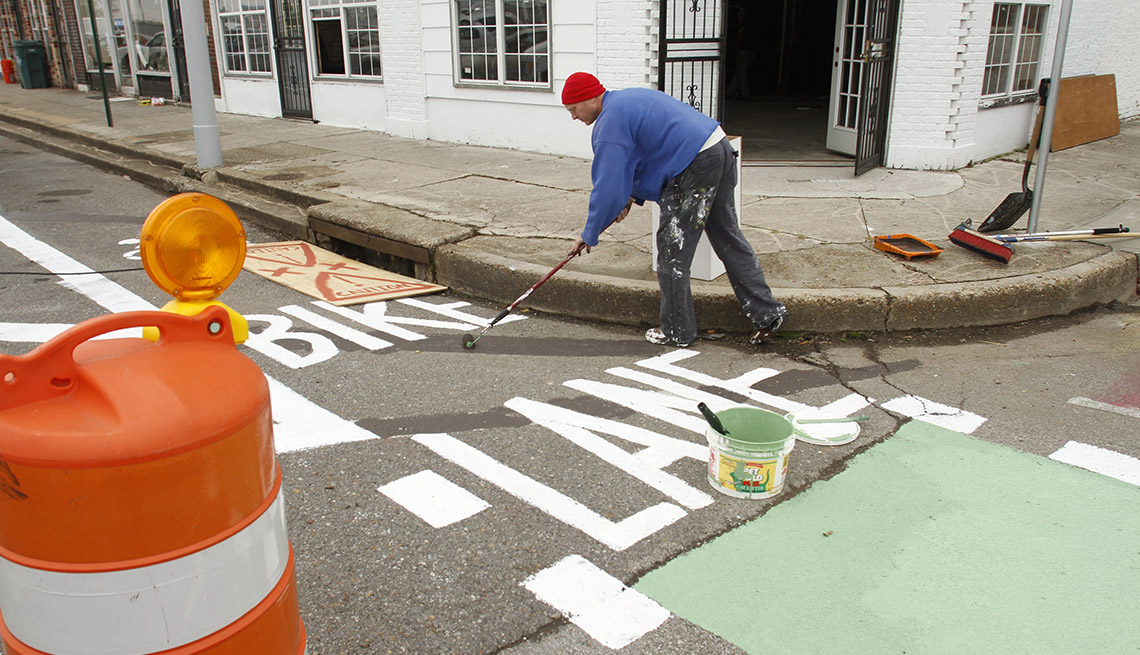
Pop-up demonstration streetscape, broad street, memphis, tennessee
- Select a language for the TTS:
- UK English Female
- UK English Male
- US English Female
- US English Male
- Australian Female
- Australian Male
- Language selected: (auto detect) - EN
Play all audios:

Livable Memphis, a nonprofit organization, teamed-up with the Broad Avenue Arts District. Using a borrowed and adapted concept from the Better Block Foundation, the groups gathered
volunteers and persuaded business owners to open temporary shops and restaurants. * Vacant storefronts were cleaned and painted * People who dreamed of opening a business were permitted to
occupy some of the vacant storefronts as demonstration businesses * Opaque materials were removed from occupied storefronts to provide for friendlier and more inviting floor-to-ceiling
windows * Cafes were extended onto the sidewalks In addition, the team redesigned the street-level public spaces to illustrate how better infrastructure can breathe life into a commercial
district. By focusing on bicyclists and pedestrians instead of cars, the team: * Re-striped the 60-foot-wide Broad Avenue, adding crosswalks and protected bike lanes * Angled and positioned
on-street parking as a protective barrier for bike lanes and to increase parking spaces * Essentially instituted a "road diet" that required vehicles to slowly ease (rather than
speed) through two lanes while people walked and bicycled nearby * Turned a vacant parking lot into a skate park * Enhanced street infrastructure by positioning street trees along the
sidewalks and storefronts * Created a "bump-out" to help slow traffic by placing large planters filled with 10-foot cedars next to vehicle traffic lanes * Installed antique-style
street lamps to provide better lighting ambience and security Local artist and event volunteer Tom Clifton helped paint the event's pop-up bicycle lane. Photo courtesy Livable Memphis
THE COSTS AND CREW The project received logistical and financial support from the Hyde Family Foundations, the Binghampton Development Corporation, the Memphis Regional Design Center, the
City of Memphis and the Community Development Council of Greater Memphis/Livable Memphis. OUTCOMES AND NEXT STEPS The event surpassed the organizers' expectations. Original goals
targeted a turnout of 5,000 people; estimates are that 13,000 people attended the event. "At first we were concerned that the bicycling would take away from business, but we quickly saw
it was helping business twofold,” said Pat Brown, business manager of T. Clifton Art. "You did have people biking, but it also helped narrow the street and slow people down. All of a
sudden, people were noticing businesses they hadn't noticed before because they were speeding by at 45 miles an hour or more." Added David Wayne Brown, president of Splash
Creative, an advertising agency: "We demonstrated that inner-city, old neighborhoods can be revitalized. Everything doesn't have to be suburbanized, where we tear down the trees
and build something new." Since the demonstration project, Broad Avenue and the Binghampton neighborhood has seen more than $25 million in investments, the opening of more than two
dozen new businesses and more then 30 property renovations. The temporary streetscape remained after the demonstration project. A more complete and permanent version will replace it when the
Hampline path is constructed. Through the Mayor's Innovation Delivery Team (now Innovate Memphis), a new program — MEMFix — was begun as a citywide cosponsored version of the
"New Face for an Old Broad" Pop-Up Project. OTHER SOLUTIONS At least two, whimsically-designed MATA bus stops have opened in Binghampton and several interactive public art displays
have been installed. In addition, developer Eric Goode said the area's "guerrilla-style revitalization" has prompted him to turn a 12,000-square-foot former warehouse on
Broad Avenue into a retail and restaurant space. LEARN MORE * Read a Livable Memphis Recap of the "New Face for an Old Broad" Project _Page published Summer 2016_
